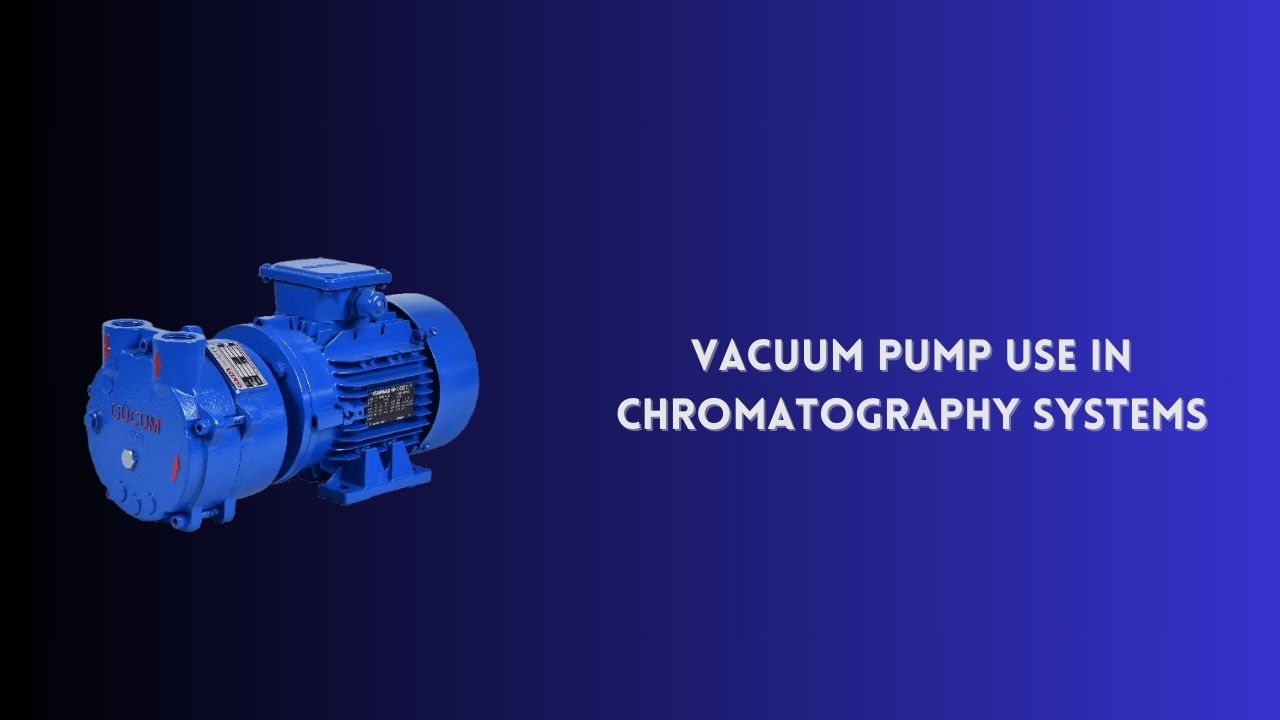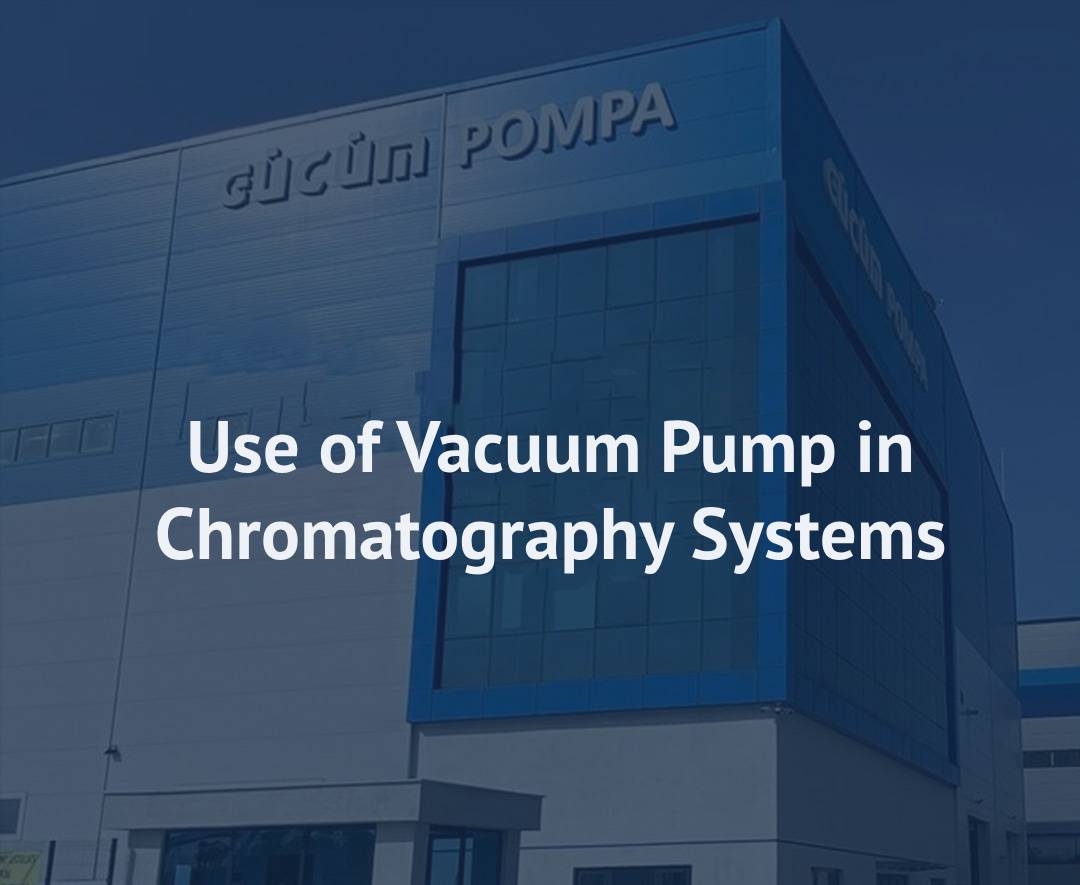Use of Vacuum Pump in Chromatography Systems
Chromatography is a technique that enables the separation, identification, and analysis of chemical components. Chromatography systems typically rely on the principle of separating samples in liquid or gas phases through various stationary and mobile phases. In these types of analyses, high sensitivity and reliability are crucial, making equipment like vacuum pumps extremely important. The use of vacuum pumps in chromatography systems plays a vital role in enhancing process speed, improving solubility, and optimizing the overall performance of the system. In this article, we will examine the usage of vacuum pumps in chromatography systems in detail.
What is Chromatography?
Chromatography is a technique that enables the separation of components in a mixture based on their physical or chemical properties. It essentially involves the movement of components at different rates between a mobile phase (usually liquid or gas) and a stationary phase (solid or liquid). This method is widely used in various fields such as chemical analysis, biotechnology, pharmaceutical production, environmental analysis, etc. In chromatography systems, vacuum facilitates the more efficient movement of the mobile phase, enabling components to be separated more clearly and quickly.


Role of Vacuum Pumps in Chromatography Systems
Vacuum pumps serve several important functions in chromatography systems. During the chromatography process, vacuum is used to control the flow, pressure, and rate of the gas or liquid mobile phase. This is especially critical in liquid chromatography (HPLC) and gas chromatography (GC) systems. The vacuum effect contributes to improving solubilities and shortening analysis times.
Vacuum pumps are typically used for two main purposes: first, to ensure a steady and consistent flow of carrier gases in systems like gas chromatography; and second, to regulate the flow of the mobile phase in liquid chromatography, enhancing solubility and separation efficiency. Vacuum also removes air and moisture from the system, thus improving solubility quality and system accuracy, which is particularly beneficial in laboratory applications requiring high sensitivity and reliability.
Contributions of Vacuum Pumps to Chromatography Systems
Vacuum pumps contribute significantly to the performance, accuracy, and efficiency of chromatography systems. Here are some key contributions of vacuum pumps in chromatography systems:
-
Improvement of System Performance: Vacuum controls the flow and rate of the mobile phase during chromatography, enabling samples to be separated more efficiently and quickly. It also ensures consistent carrier gas flow in systems like gas chromatography, resulting in more accurate results.
-
Enhanced Solubility and Separation Capabilities: One of the key roles of vacuum is to improve solubilities. With better and smoother flow facilitated by vacuum, components are separated more effectively, leading to enhanced chromatographic resolutions and cleaner, clearer analysis results.
-
Improved Efficiency and Time Savings: Vacuum speeds up chromatography processes, shortening analysis times and increasing laboratory efficiency. In high-volume analyses, vacuum has a significant impact as it facilitates the processing of more samples simultaneously.
-
Control of Carrier Gas Flow: In gas chromatography (GC) systems, vacuum helps regulate carrier gas flow, leading to more stable and accurate results. It reduces error margins by ensuring that the carrier gas flows at a consistent rate.
-
Reduction of Aeration: Vacuum pumps remove air and moisture from chromatography systems, enhancing the accuracy and purity of samples. This leads to cleaner and more reliable results.
Vacuum Pump Usage in Different Chromatography Methods
Vacuum pumps are utilized differently in various chromatography methods. Both liquid chromatography and gas chromatography rely on vacuum pumps. The type of vacuum and pumps used depends on the specific requirements of the system.
Vacuum Pump Usage in Gas Chromatography
Gas chromatography (GC) is a technique used for separating volatile components. In this system, vacuum pumps regulate carrier gas flow. The carrier gases, typically inert gases like helium or nitrogen, need to flow at a steady rate. Vacuum ensures the correct flow and stable operation of these gases, improving the accuracy of analyses. Additionally, vacuum removes air and moisture, allowing for cleaner and more accurate results.
Vacuum Pump Usage in Liquid Chromatography
Liquid chromatography (HPLC) is used for separating liquid samples. In HPLC systems, vacuum regulates the flow of the mobile phase and eliminates air bubbles, ensuring a more stable flow. Vacuum helps increase solubility and improves component separation, contributing to faster analysis times. It also ensures more efficient movement of the mobile phase.
Selection of Vacuum Pumps in Chromatography Systems
Vacuum pump selection depends on the type of application in chromatography systems. Different chromatography systems require different types of vacuum pumps. Here are some vacuum pump types used in chromatography systems:
-
Rotary Vane Vacuum Pumps: These pumps are suitable for low to medium vacuum levels and are commonly used in liquid chromatography (HPLC) systems. They are known for their high efficiency and durability.
-
Diaphragm Pumps: These pumps, used to remove air and other gases, are preferred in gas chromatography systems. They are ideal for high-precision and low-volume vacuum needs.
-
Dry Scroll Pumps: These pumps provide dry operation and are suitable for both liquid and gas chromatography systems. They offer rapid and efficient vacuum.
-
Diffusion Pumps: These are suitable for high vacuum requirements and are used in more sensitive applications such as biotechnology. They are ideal for gas chromatography due to their ability to reach high vacuum levels.
Vacuum pumps play a critical role in chromatography systems. They enhance accuracy, solubility, and efficiency, contributing to the performance of both gas and liquid chromatography systems. Proper selection and maintenance of vacuum pumps are essential for the correct functioning of these systems. These technologies play significant roles in various fields such as biotechnology, chemistry, pharmaceuticals, and environmental sciences.
Chromatography is an analytical technique that enables the separation and analysis of chemical components. Widely used in chemistry and biotechnology, this method relies on the movement of components at different rates between stationary and mobile phases. One of the critical pieces of equipment used in these systems is vacuum pumps, which enhance the accuracy and efficiency of chromatography processes. Vacuum pumps play an essential role in improving the speed and accuracy of chromatography systems.
Basic Principles of Chromatography Systems
Chromatography is an analytical technique used to separate components in a mixture based on their physical or chemical properties. It facilitates the movement of components at different rates between a stationary phase (solid or liquid) and a mobile phase (liquid or gas). Chromatography is commonly used in analytical laboratories, biotechnology industries, and pharmaceutical development...
